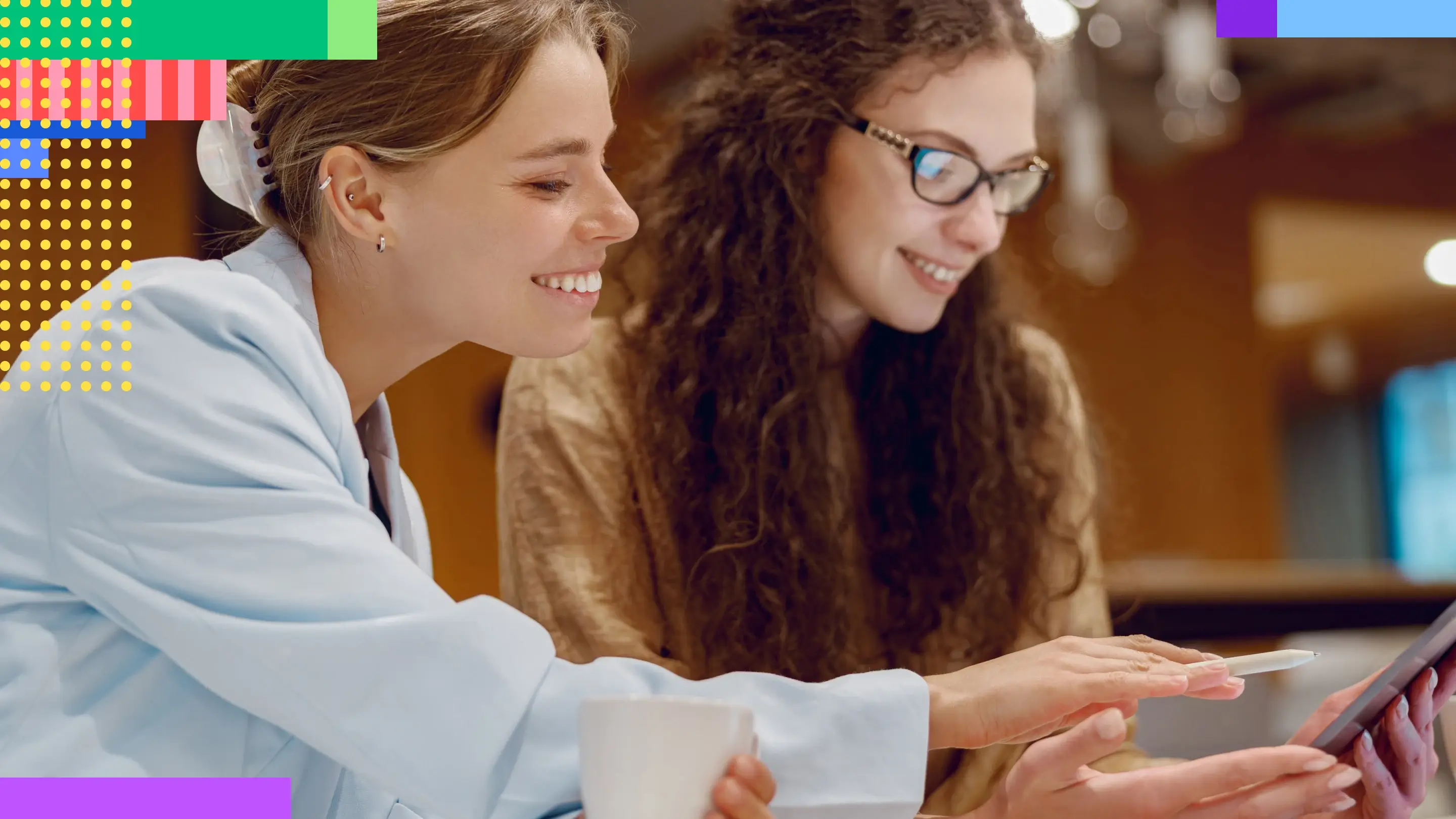Research and development (R&D) experts are on a constant quest for breakthroughs. The foundation of this work is hypothesis testing, the rigorous process of validating or refuting an idea through empirical data. While this has long been a task for individual experts, the growing complexity of modern research requires a more integrated, team-based approach.
For collaborative R&D teams, visual collaboration platforms give experts ways to work together, enhancing the rigor of research and reliability of their findings. We’ll explore solutions through a unified approach, moving beyond isolated efforts to create a shared visual environment for innovation.
Key Highlights:
- Shared methodologies: Visual collaboration helps teams create a common way to research, promoting rigor in research. It helps by aligning everyone on the scope, methods, and criteria for success from the start.
- Real-time data integration: A central mural allows for immediate sharing and interpretation of data. This speeds the feedback loop, and so all team members are working with the most current information.
- Collective interpretation: Bring different perspectives together to analyze results to overcome individual biases, leading to stronger results and more robust scientific findings.
Friendly reminder: Mural’s collaborative tools are especially useful for ideation, planning, and sharing non-confidential research insights. Always follow your organization’s cybersecurity and IP protection policies, and visit our Trust & security page to learn more.
Accelerating breakthroughs with collaborative hypothesis testing
The move towards collaborative hypothesis testing is both an operational improvement and a strategic advantage for R&D teams.
Teams can move beyond siloed experiments and embrace a holistic, collective approach to problem-solving. Teams that can quickly and reliably test hypotheses are better positioned to drive innovation and deliver impactful results to their organization. As the complexity of modern business and scientific challenges increases, no single individual has all the answers.
What are the challenges of traditional hypothesis testing?
Traditional, non-collaborative approaches to hypothesis testing face several challenges:
- Lack of transparency: Data and insights are confined to individual researchers or small, isolated teams.
- Data silos: It’s difficult to get a complete picture of research progress when folks are siloed.
- Outdated information: Without a shared workspace like a Mural canvas, team members may rely on outdated data or duplicate efforts.
- Limited collective feedback: An absence of a formal process for team input leads to unchecked individual biases and can skew result interpretation.
- Compromised quality: These factors can undermine the rigor and reliability of hypothesis testing, and slow the pace of discovery.
- Inconsistent methodologies: Without standardized processes, experiments are harder to replicate and results across projects are difficult to compare.
How collaborative research tools elevate R&D
Collaborative research tools like Mural are more than just a place to store files; they’re dynamic environments that support a new era of collaboration for R&D. Here are three steps to improve hypothesis testing in R&D teams.
Step 1: Map your assumptions
Improving hypothesis testing often starts with a single question: "What assumptions are we making? Begin with a visual exercise like assumptions mapping. Identify and prioritize the underlying beliefs that inform the research first.
Step 2: Set your vision
Next, a shared vision reduces miscommunication and helps to build momentum toward a successful outcome, particularly when managing complex, multi-phase projects.
Step 3: Plan your execution
Finally, a shared understanding of the research plan is crucial. A thoughtful execution tree can help teams map out the steps of their research, so everyone is aligned on the project’s direction and dependencies.
Related: Research templates
Complex information made simple with Mural
The best tools for scientific collaboration are those that are flexible and intuitive. Mural is great for visual collaboration for research because it makes complex information easy to digest and discuss.
- Brainstorming: Brainstorm templates like the brainwriting template can help R&D scientists and researchers quickly set up, document, and share high-level ideas in real-time.
- Notetaking: Make sense of research notes to centralize observations and key findings. Project leads and teams retain valuable insights and streamline documentation throughout the research process.
- Workflow planning: Data scientists and analysts can standardize data capture and share statistical results for collaborative review and robust validation. Workflow diagraming and project planning make the big-picture work go more smoothly.
Choosing the right tools for collaborative hypothesis testing
Selecting the right collaborative research tools is critical to your team’s success. The best tools for R&D collaboration will offer features that support real-time data integration, enable visual workflows, and provide a single source of truth for all project-related information.
Imagine two perspectives, a data analyst and a project manager, on an R&D team using visual collaboration in the flow of work:
Data analyst:
First, I analyze the raw experiment data in a secure environment. After, I create a summary of key findings, removing any sensitive details, and paste the aggregated, non-confidential results into a secure Mural workspace. Using Mural AI to cluster by topic, I group insights by topic for review. The team and I discuss trends and annotate findings directly in the mural together, before exporting a summary to the project lead.
Project manager:
At the start of the day, I open our team’s mural to check project status and recent updates. I organize a quick brainstorming session to capture everyone’s ideas on key challenges. When I receive a summary of findings from an analyst, I update our workflow diagram so responsibilities and deadlines are clear for the next sprint.
Real-time data integration gives R&D teams instant feedback, enabling faster decisions and agile pivots. Data scientists can quickly spot trends and anomalies, while project leads gain up-to-date insights for better resource management and timely adjustments. The result? Research projects stay on track.
Advance your hypothesis testing with Mural
Aligning cross-functional teams in scientific collaboration requires a shared, transparent space where everyone can see the big picture. Mural’s platform supports visual collaboration for research as a central hub where marketing, sales, and R&D teams can come together. This alignment is especially important for teams that want to sell a new product. It helps connect the technical details of a new product with its market value and strategic fit.
By visually mapping out the research journey, everyone can understand their role and contribution, fostering a greater sense of shared ownership and purpose. The result is a more cohesive product launch and a clear path from scientific discovery to market success.
Curious to learn more? Chat with our team for a demo.
FAQ
Q: How does visual collaboration enhance the rigor of my team’s research?
A: Visual collaboration promotes a transparent process from the start. With templates for methodology and planning, every team member is aligned on the research goals and criteria for success. This collective approach helps to standardize your team’s process, reduces misinterpretation, and ensures that multiple experts vet conclusions.
Q: What makes a collaborative workspace better than using traditional tools like spreadsheets for hypothesis testing?
A: Traditional tools often create data silos and disjointed workflows, making it difficult to see the full picture. A shared workspace like Mural provides a single, visual platform where your team can not only centralize data, but also actively collaborate on it. You can move from raw data to group analysis, discussion, and decision-making on one screen. This makes the feedback process easier and finds insights more quickly.
Q: How does a visual collaboration approach help align cross-functional teams?
A: A visual, shared space is essential for bringing different departments, like R&D, marketing, and sales, together. It creates a single source of truth where everyone can see the research journey, contribute their specific expertise, and understand how the scientific work connects to broader business goals. Transparency helps teams work together to market products by linking technical discoveries to market success. This means new product development is always in line with its strategic purpose.




.avif)
%20(2).avif)

.avif)





